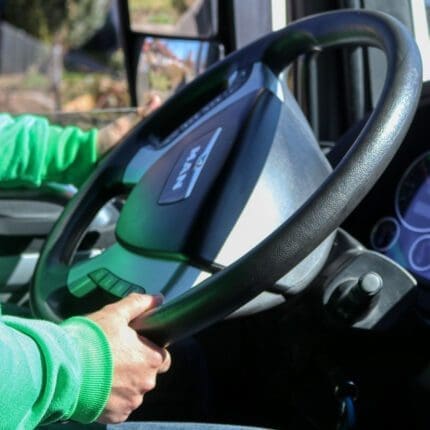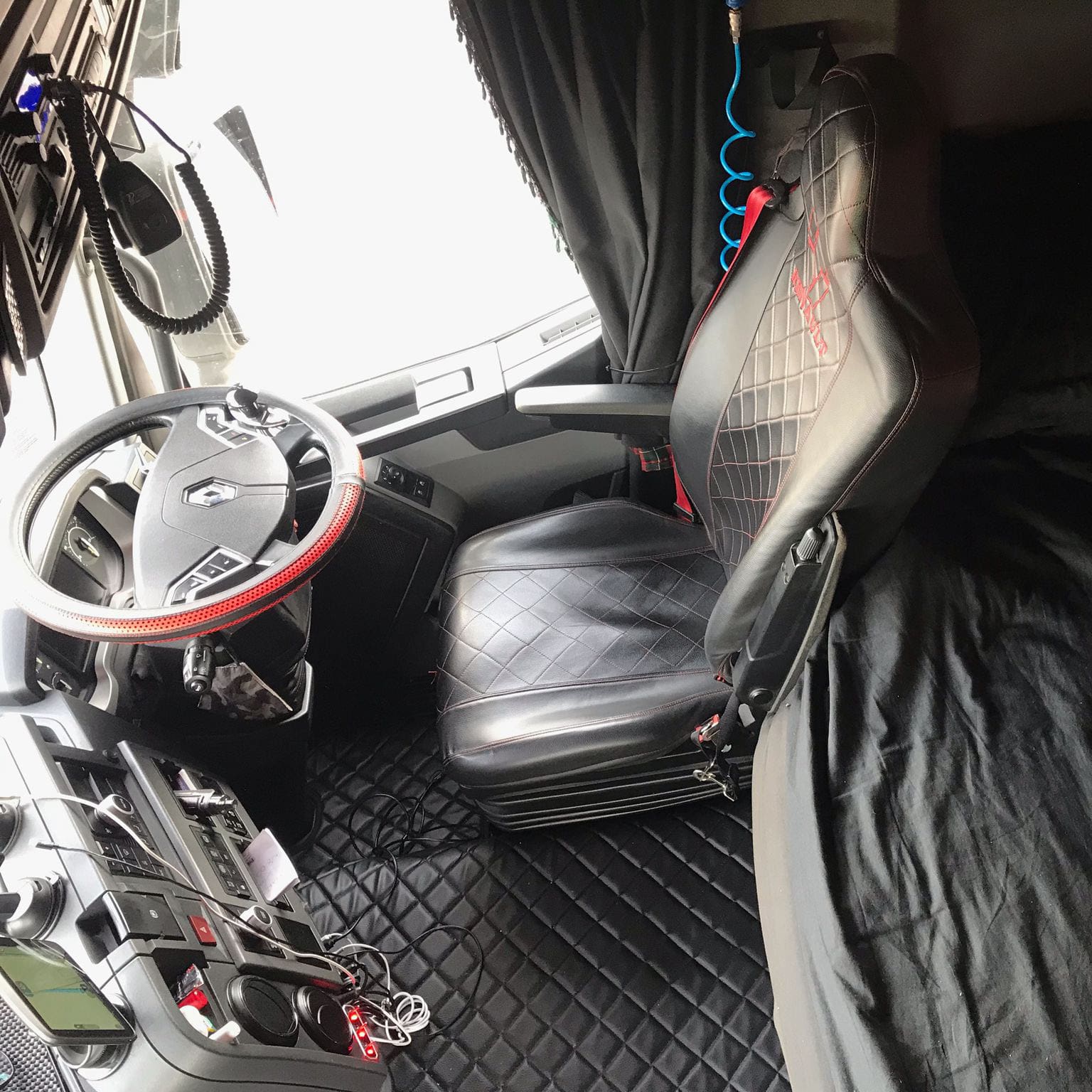- Shop All Documents + Bundles
- FORS V7.1 Document Bundle | Bronze (15 Policies)
- Transport Manager Compliance Pack (10 Policies)
- Transport Manager Compliance Pack (6 Policies)
- Health & Safety Policy Template
- Fuel, Emissions And Air Policy Template
- Operational Security Policy Template
- Serviceability And Roadworthiness Policy Template
- Road Traffic Collision Policy Template
- Counter Terrorism Policy Template
- Load Safety Policy Template
- Vehicle Routing And Scheduling Policy Template
- Driving Standards Policy Template
- Driving Hours Policy Template
- In Cab Technology Policy Template
- Passenger Safety Policy Template
- Complaints And Grievances Policy Template
- Drug And Alcohol Management Policy Template
- Hazard And Risk Identification Policy Template
- VOR (Vehicle Off Road) Policy Template
- Tyre + Wheel Policy Template
- Health & Eyesight Policy Template
- Transport Infringement Policy Template
- Walk Around Check (Defect Check) Tool Box Talk Template
- Transport Manager CV Template
- Social Media Policy Template
- Transport Manager Contract Template
- External Transport Manager Contract Template
- Driver Handbook
Transport UK > Transport Manager Shop > In Cab Technology Policy Template

VOR (Vehicle Off Road) Policy Template
£11.00 ex.VAT

Driving Standards Policy Template
£11.00 ex.VAT
In Cab Technology Policy Template
£11.00 ex.VAT
Ensure the rules of using in cab technology to maintain the safety of the driver and other vulnerable users are adhered to.
⧉ PREVIEW: View our Test Document here to sample the format.
| Brand |
Transport UK |
|---|---|
| Document Format |
PDF [Digital Download] |
| Legislation |
UK Law |
| Transport Manager |
Transport Manager CPC ,In Cab Technology |
| Document Author |
Transport UK Industry Professionals |
| Technology |
Strictly No Artificial Intelligence (AI) Copywriting |
| How To Edit |
Microsoft Word |
| Product Type |
Digital Product [Downloadable] |
5
People watching this product now!
SKU:
TUK-ICT-01
Category: In Cab Technology Policy
Tags: Transport Manager Compliance, Transport Manager CPC, Transport Manager Documents, Transport Manager Handbook, Transport Manager Resources
Description
Why do i need this document?
This policy is designed to assist and encourage all employees to achieve and maintain minimum appropriate standards.
An in-cab technology policy is essential for any organization that utilizes technology within their vehicles. This policy outlines the rules and guidelines that drivers must follow when using in-cab technologies, such as GPS devices, communication systems, telematics, and other electronic tools. Here are the reasons why having such a policy is crucial:
- Safety: The primary focus of an in-cab technology policy is to ensure the safety of the driver, passengers, and other road users. Distracted driving caused by using electronic devices can lead to accidents and injuries. The policy should clearly state when and how drivers can interact with technology while driving, emphasizing the importance of pulling over to a safe location for non-essential tasks.
- Compliance: In-cab technologies may be subject to regulations and laws governing their use, such as hands-free communication requirements. The policy should align with these regulations to ensure the organization remains compliant and avoids potential legal issues or penalties.
- Data Privacy and Security: Many in-cab technologies collect and transmit data. The policy should establish guidelines on data privacy and security, outlining how sensitive information is stored, accessed, and protected. This ensures that the organization maintains the confidentiality of its data and complies with data protection regulations.
- Proper Use of Technology: The policy should outline the intended use of each in-cab technology and any restrictions on their usage. For instance, the use of certain apps or websites while driving might be prohibited. This prevents misuse of technology and keeps drivers focused on their primary responsibilities.
- Training and Familiarity: The policy should mandate that drivers receive proper training on using in-cab technologies before they operate any vehicle. Drivers should be familiar with the functions of the devices and know how to troubleshoot common issues.
- Distraction Minimization: An effective in-cab technology policy should emphasize the importance of minimizing distractions while driving. It may recommend activating “Do Not Disturb” modes during driving hours or using voice commands whenever possible to reduce the need for manual interaction.
- Reporting Procedures: The policy should include procedures for reporting any malfunctions or technical issues with the in-cab technologies. Prompt reporting ensures that potential problems are addressed swiftly, reducing downtime and maintaining operational efficiency.
- Disciplinary Measures: To reinforce the importance of adhering to the policy, the consequences of violating it should be clearly outlined. This may include warnings, retraining, or more severe disciplinary actions for repeat or severe infractions.
- Regular Review and Updates: An in-cab technology policy should be reviewed regularly to incorporate any new technologies, best practices, or changes in regulations. This ensures that the policy remains relevant and effective over time.
- Encouraging Responsibility: A well-structured policy promotes a culture of responsibility and accountability among drivers. When drivers understand the rationale behind the policy and its impact on safety and efficiency, they are more likely to comply willingly.
In conclusion, an in-cab technology policy is essential for promoting safety, compliance, data security, and responsible technology usage within an organisation’s fleet. By providing clear guidelines and expectations, the policy helps drivers make informed decisions and maintain focus while on the road, contributing to the overall success of the organisation’s transportation operations.
Reviews (0)
Only logged in customers who have purchased this product may leave a review.
How does it work?
We will deliver this digital document (PDF) instantly to you by email when you purchase it.
- Purchase
- Download
- Add your company logo/details
- Adjust/tailor to your requirements
- Be compliant
⧉ Want to try before you buy? View our Test Document here to sample the format in which our documents are made available to you.
Templates you can trust
Our templates are written by transport professionals with a combined 100 years experience in the industry, managing complex and large fleets.
Strictly NO artificial intelligence (AI) copywriting is used in our policies and documents.
You may also like…
Transport Manager Compliance Pack (6 Policies)
Driving Hours Policy, Driving Standards Policy, In Cab Technology Policy, Road Traffic Collision Policy, Tyre + Wheel Policy, VOR (Vehicle Off Road) Policy, Compliance Document Bundles
Rated 5.00 out of 5
Related products
Transport Manager Compliance Pack (10 Policies)
Driving Hours Policy, Driving Standards Policy, Fuel, Emissions And Air Policy, In Cab Technology Policy, Load Safety Policy, Road Traffic Collision Policy, Serviceability And Roadworthiness Policy, Tyre + Wheel Policy, Vehicle Routing And Scheduling Policy, VOR (Vehicle Off Road) Policy, Compliance Document Bundles
Rated 5.00 out of 5














Reviews
There are no reviews yet.